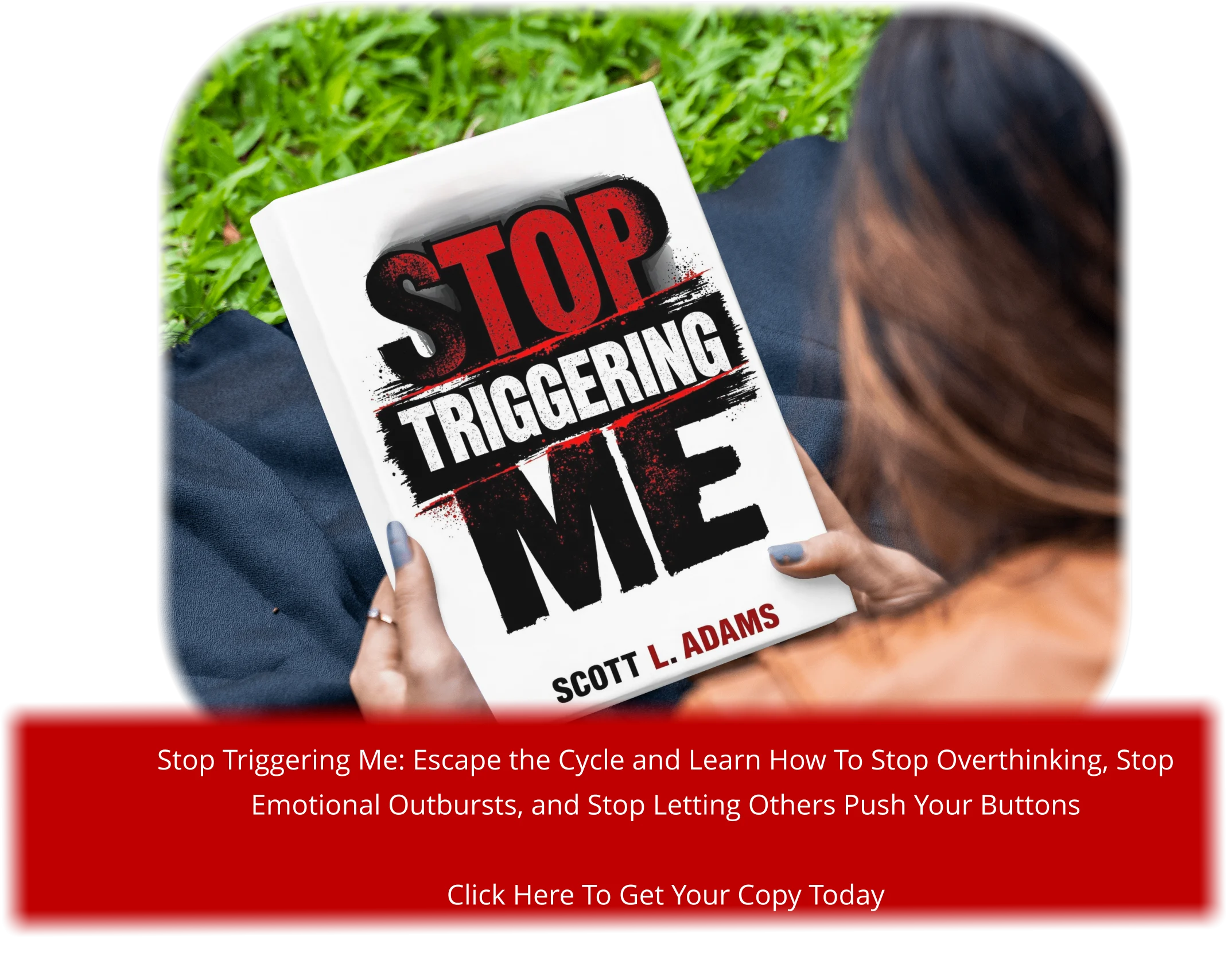Have you ever felt like the weight of the world was on your shoulders? I remember a time when I was juggling work deadlines, family responsibilities, and personal goals. It felt like every little thing added to the pressure, and I didn’t know how to handle it. That’s when I realized the importance of building my ability to stay calm, no matter the situation.
Stress is a natural response to pressure, and it affects both your body and mind. Understanding how to manage it can make a huge difference in your daily life. Research shows that people with higher stress tolerance can thrive in challenging situations, while those with lower tolerance may struggle with even minor inconveniences1.
In this guide, I’ll share three psychological tricks that have helped me stay calm and focused. These strategies are rooted in science and practical experience, and they’ve made a big difference in how I handle pressure. Let’s dive in and explore how you can boost your ability to stay calm, no matter what life throws your way.
Key Takeaways
- Stress is a natural response to pressure, but it can be managed effectively.
- Building stress tolerance helps you stay calm in challenging situations.
- Practical strategies can improve both your body’s and mind’s response to stress.
- Understanding the science behind stress can empower you to take control.
- Small changes in your daily routine can make a big difference in managing stress.
Introduction to Staying Calm Under Pressure
Life often throws curveballs, and staying calm can feel like a superpower. Whether it’s a tight deadline at work or a challenging moment in a relationship, how we respond to pressure shapes our experience. This guide is here to help you understand and manage these moments more effectively.
In the following sections, I’ll share practical techniques rooted in science and personal experience. These strategies can help you stay composed, no matter the situation. Let’s explore why these psychological tricks matter and how they can transform your approach to pressure.
Overview of the How-To Guide
This guide focuses on simple yet powerful methods to help you stay calm. Here’s what you’ll learn:
- How to recognize your body’s response to pressure.
- Techniques to shift your focus and regain control.
- Ways to build resilience over time.
Each method is designed to be easy to apply, even in the most demanding moments. Research shows that about 75% of adults experience moderate to high levels of pressure in their daily lives2. These techniques can help you stand out in that crowd.
Why Psychological Tricks Matter
Our reactions to pressure are shaped by both genetics and personal experiences. While some people naturally handle tough situations better, others may need to develop this skill. Psychological tricks work because they help you reframe your thoughts and emotions.
For example, studies suggest that practicing gratitude can lower pressure levels by up to 20%2. Small changes like this can make a big difference. By adopting these strategies, you’ll not only stay calm but also make better decisions and feel more satisfied in challenging times.
I’ve personally found these methods invaluable. They’ve helped me navigate everything from work deadlines to family emergencies. I’m excited to share them with you and help you build your own toolkit for staying calm under pressure.
Understanding Stress Tolerance and Its Impact
Do you notice how some people handle pressure better than others? It’s not just luck—it’s about their ability to manage challenges effectively. This ability, often called stress tolerance, plays a huge role in how we navigate life’s ups and downs.
Defining Stress Tolerance
Stress tolerance is the point where you can handle pressure without feeling overwhelmed. It’s like a mental and emotional threshold. Some people naturally have a higher threshold, while others need to build it over time. For me, understanding this concept was a game-changer. It helped me recognize when I was nearing my limit and take steps to recharge.
How Stress Affects Your Health
When stress becomes too much, it doesn’t just weigh on your mind—it impacts your body too. Chronic stress can lead to issues like high blood pressure, anxiety, and even memory problems3. I’ve seen this firsthand. During a particularly busy time at work, I noticed my focus slipping and my energy levels dropping. It was a wake-up call to take better care of myself.
Research shows that prolonged stress can suppress your immune system, making you more susceptible to illnesses3. This is why recognizing the early signs—like irritability or trouble sleeping—is so important. By paying attention to these signals, you can take proactive steps to manage your response to pressure.
Here’s the good news: small changes can make a big difference. Whether it’s taking a few deep breaths or carving out time for rest, these habits can help you build resilience over time. Understanding your body’s signals is the first step toward better management of life’s challenges.
Psychological Techniques to Stay Calm in Any Situation
Finding calm in chaos is a skill anyone can develop with the right tools. When life feels overwhelming, small shifts in mindset can make a big difference. Let’s explore two powerful strategies that have helped me stay composed even in the most challenging moments.
Deep Breathing and Mindfulness
One of the simplest yet most effective ways to regain control is through deep breathing. When I’m feeling overwhelmed, I take a moment to focus on my breath. Inhale for four counts, hold for four, and exhale for six. This technique helps oxygenate the blood and clears the mind4.
Mindfulness is another game-changer. During a particularly intense work deadline, I started practicing mindfulness for just five minutes a day. It helped me stay present and reduced my anxiety significantly. Research shows that even short-term mindfulness programs can reduce psychological stress4.
Here’s how you can start:
- Find a quiet space and sit comfortably.
- Focus on your breath or a calming word.
- If your mind wanders, gently bring it back to the present.
Consistency is key. Over time, these small practices can lead to noticeable benefits.
Using Music and Positive Thought Patterns
Music has a unique ability to shift your mental state. I often turn to calming playlists when I need a mental reset. Studies suggest that listening to soothing music can lower cortisol levels and promote relaxation4.
Positive thought patterns are equally important. When faced with a problem, I try to reframe my thoughts. Instead of thinking, “I can’t handle this,” I remind myself, “I’ve overcome challenges before, and I can do it again.” This simple shift in mindset can make a world of difference.
Here are a few steps to incorporate these strategies into your day:
- Create a playlist of calming songs for stressful moments.
- Practice gratitude by listing three things you’re thankful for each day.
- Replace negative thoughts with empowering affirmations.
These techniques can help you stay calm and focused, no matter the situation.
Practical Strategies for Stress Management
Small changes in your daily routine can transform how you handle life’s challenges. When I started focusing on a well-balanced lifestyle, I noticed a significant shift in my ability to stay calm. It’s not about perfection—it’s about making consistent, manageable adjustments that add up over time.
Adopting a Well-Balanced Lifestyle
One of the most effective ways to manage pressure is through regular physical activity. The CDC recommends at least 150 minutes of moderate-intensity exercise each week5. I’ve found that even a 20-minute walk can clear my mind and boost my mood. Exercise not only reduces anxiety but also helps prevent stress-related health issues like heart disease5.
Nutrition plays a crucial role too. A diet rich in antioxidants can improve mental health and lower pressure levels by up to 30%6. I started incorporating more fruits, vegetables, and whole grains into my meals, and the difference was noticeable. Small changes, like swapping sugary snacks for nuts or yogurt, can make a big impact.
Sleep is another cornerstone of a balanced lifestyle. Lack of sleep affects about 10% of adults and contributes to heightened pressure levels6. I’ve learned to prioritize rest by setting a consistent bedtime and creating a calming bedtime routine. Quality sleep helps your body recover and prepares you to face the next day with clarity.
Supportive relationships are equally important. Engaging with friends and family can lower pressure levels by 30%6. I make it a point to connect with loved ones regularly, even if it’s just a quick call or text. These connections remind me that I’m not alone in facing challenges.
By focusing on these areas—exercise, nutrition, sleep, and relationships—you can build a foundation that supports your ability to stay calm. It’s not about making drastic changes overnight. Start small, stay consistent, and watch how these habits transform your life.
Enhancing Stress Tolerance Through Resilience and Daily Practices
Resilience is like a muscle; the more you train it, the stronger it becomes. It’s not just about enduring tough times—it’s about thriving through them. I’ve learned that building resilience involves understanding both genetic factors and the daily habits that shape our responses to challenges.
Leveraging Genetic Insights and the Warrior/Worrier Concept
Did you know that your genes can influence how you handle pressure? The COMT gene, for example, plays a role in how your body processes dopamine. Some people are naturally more resilient—often called warriors—while others, known as worriers, may feel the weight of challenges more intensely7.
But here’s the good news: even if you’re a worrier, you can train your mind and body to respond better. Studies show that resilient individuals are 50% more likely to recover from trauma compared to those with low resilience7. Understanding your genetic tendencies can help you tailor strategies that work for you.
Building Social, Emotional, and Physical Support Networks
Resilience isn’t built in isolation. I’ve found that having a strong support system makes all the difference. Whether it’s friends, family, or colleagues, these connections provide a safety net during tough times. Research shows that engaging in supportive relationships can increase resilience by 30%7.
Here are a few steps I’ve taken to build my own network:
- Regularly check in with loved ones, even if it’s just a quick text.
- Join groups or communities that share my interests or goals.
- Seek professional support when needed, like therapy or coaching.
These relationships remind me that I’m not alone, and they’ve been a lifeline during challenging moments.
Resilience is a continuous process. It requires attention to both emotional and physical needs. By understanding your genetic makeup and nurturing your support networks, you can build the resilience needed to thrive in any situation.
Conclusion
When life feels overwhelming, it’s easy to forget that small steps can lead to big changes. The techniques we’ve explored—like deep breathing, mindfulness, and positive thought patterns—can help you stay calm in any situation. Understanding your response to pressure is the first step toward building resilience.
Remember, change takes time. Start with one strategy and see how it works for you. Research shows that viewing challenges positively can improve your health and emotional well-being8. Even on tough days, these small shifts can make a difference.
If you’re facing a problem, know that you’re not alone. Many people find strength in supportive relationships and daily practices. Experiment with the techniques shared here and find what works best for you.
Building a balanced life isn’t about perfection—it’s about progress. Take it one day at a time, and you’ll see how these strategies can transform your ability to stay calm and focused, no matter what comes your way.







